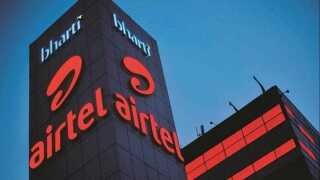The figures, released today by the Dynamic Spectrum Alliance (DSA) and the Telecom Advisory Services LLC (TAS), show that within a decade – and if regulations for licence-exempt spectrum access are adopted, as DSA is campaigning for – an economic boost of $337 billion could be recorded across the locations.
The figures also confirmed "a significant early economic impact" following the designation of 1,200 MHz in the 6 GHz band for unlicensed use for applications such as Wi-Fi 6E.
The studies were conducted by Dr. Raul Katz and Fernando Callorda, scholars of economics and telecommunications policy.
The publication of the studies followed the news that DSA is working with the UK Government’s Digital Access Programme (DAP) to bring its spectrum expertise to digital inclusion initiatives in Brazil, Indonesia, Kenya, South Africa and Nigeria.
"They have selected five countries that can implement new technologies and are in the process of digital transformation but still need digital inclusion," president Martha Suarez (pictured) told Capacity. There's more from the interview in the February/March issue of the magazine.
Assessing the potential
The aim of the new studies was to assess the economic value of unlicensed use of the 6GHz band in Indonesia, Kenya, Nigeria and South Africa by assessing the impact on service quality, coverage, affordability and the impact on different applications and use cases.
The methodology identified the different sources of economic value, estimated them independently and then aggregated within a single value.
In the case of Indonesia, the cumulative economic value between 2022 and 2031 associated with enabling license-exempt access to the 1200 MHz in the 6 GHz band amounts to $126.44 billion in GDP contribution, $37.73 billion in producer surplus to Indonesian enterprises, and $23.47 billion in consumer surplus to the Indonesian population. The total contribution amounts to $187.63 billion to the Indonesian economy over the next 10 years.
In Kenya, the cumulative economic value of the same for the 2021 and 2030 period amounted to $14.28 billion in GDP contribution, $1.12 billion in producer surplus to Kenyan enterprises, and $4.89 billion in consumer surplus to the Kenyan population. The total contribution amounts to $20.29 billion to the Kenyan economy over the next 10 years.
For Nigeria, the cumulative economic value reaches $49.89 billion in GDP contribution, $10.51 billion in producer surplus to Nigerian enterprises, and $11.74 billion in consumer surplus to the Nigerian population. The total contribution amounts up to $72.14 billion to the Nigerian economy over the next 10 years.
Lastly, in South Africa, the cumulative economic value between 2021 and 2030 amounted to $34.81 billion in GDP contribution, $13.32 billion in producer surplus to South African enterprises, and $9.63 billion in consumer surplus to the South African population. The total contribution amounts up to $57.76 billion to the South African economy over the next 10 years.
“License-exempt use of the entire 6 GHz band for Wifi will be critical to address current pressing bandwidth demands for end users, new applications and industries,” said Suarez.
“It will also play a crucial role in bridging the digital divide in these countries, enabling improved access to remote education, work and commerce. Wifi needs greater spectrum access in the 6 GHz band to effectively support the modern digital ecosystem.”
Area of study | South Africa | Kenya | Nigeria | Indonesia |
GDP contribution
| $34.81 billion | $14.28 billion | $49.89 billion | $126.44 billion |
producer surplus to national enterprises
| $13.32 billion | $1.12 billion | $10.51 billion | $37.73 billion |
consumer surplus
| $9.63 billion | $4.89 billion | $11.74 billion | $23.47 billion |
Total contribution over 10 years
| $57.76 billion | $20.29 billion | $72.14 billion | $187.63 billion |









